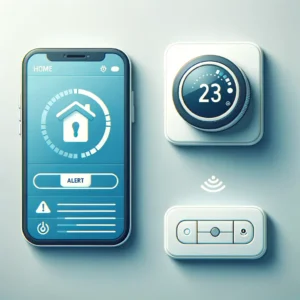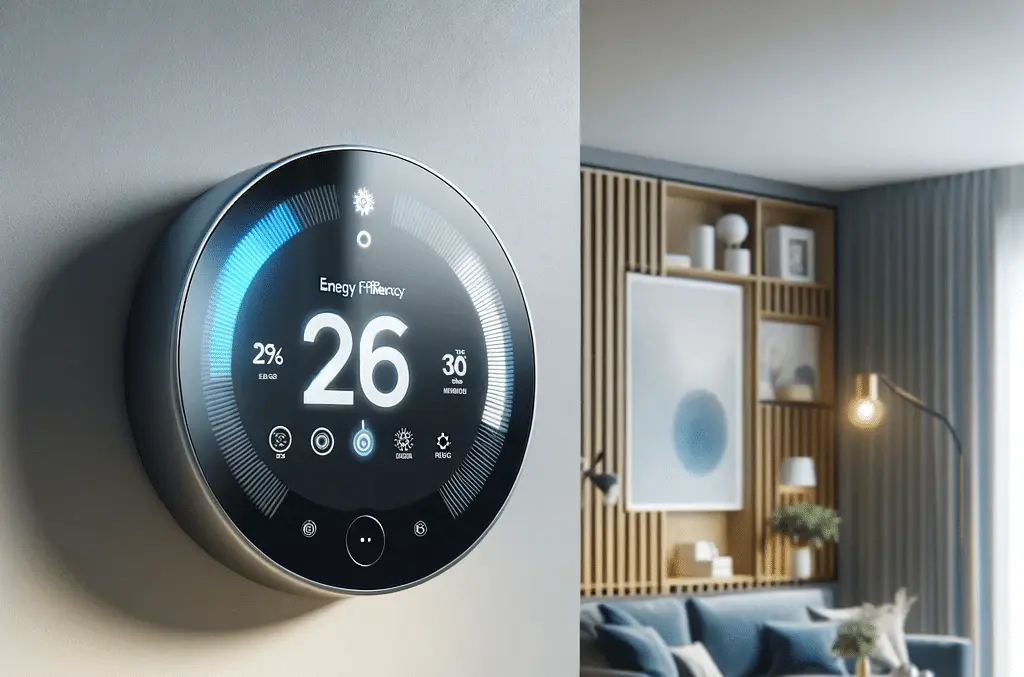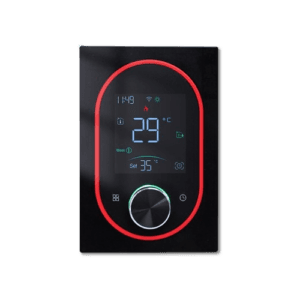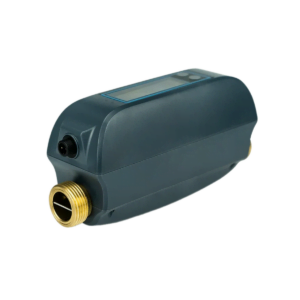As the world embraces smarter living, upgrading from a traditional replacement thermostat to a smart thermostat stands out as a crucial home improvement that offers substantial benefits. These modern devices enhance comfort, increase energy efficiency, and integrate seamlessly with other smart home technologies. This first part of our guide delves into the reasons why a smart, WiFi-controlled thermostat should be your next home upgrade.
1. Enhanced Energy Efficiency with Smart Thermostats
One of the primary motivations for upgrading to a smart thermostat is the significant enhancement in energy efficiency it offers. Smart thermostats, like those offered by popular brands including Nest, Ecobee and Grus, utilize advanced algorithms to learn your habits and adjust your home's heating and cooling systems for optimal performance. They consider factors such as the time of day, the local weather, and your home's occupancy patterns.
For instance, a smart thermostat can automatically lower the temperature during the winter when your house is empty, and warm it up just before you return, ensuring comfort without wasting energy. This functionality is not just about convenience; it’s about saving money. According to industry estimates, smart thermostats can reduce your heating and cooling costs by up to 20%.
2. Remote and App-Controlled Thermostat Features

The modern homeowner values convenience highly, and smart thermostats deliver this by offering remote control capabilities. Whether it's a Honeywell or a lesser-known brand, the best smart thermostats allow you to control your home’s climate from anywhere. All you need is a smartphone and an app. This feature is particularly beneficial if you unexpectedly need to adjust your home's temperature—perhaps you left for vacation and forgot to adjust the settings, or you want to pre-heat your home before you arrive on a chilly evening.
Choosing a WiFi controlled thermostat means you can also monitor energy usage in real-time, making adjustments that save money without compromising on comfort. Whether it's adjusting the air conditioning thermostat before you get home or turning down the heat remotely, these devices put the control in your hands, simplifying life and ensuring comfort.
3. Installation and Compatibility
Upgrading to a smart home thermostat might seem daunting, especially when it comes to installation. However, most leading thermostat brands have streamlined the process to ensure that even those with minimal technical skills can handle it. The package usually includes detailed instructions, and many manufacturers provide online tutorials or even customer support hotlines.
When considering how to install a home thermostat, it’s important to check compatibility with your existing HVAC system. Most smart thermostats, such as those designed for heat pump systems or complex multi-zone heating systems, are compatible with a wide range of equipment. However, if you're unsure, consulting with a professional can ensure that your new thermostat works seamlessly with your existing setup. Additionally, many stores, including Home Depot, offer installation services, making the upgrade process even smoother.
4. Maintenance Alerts and Smart Diagnostics
A key feature that sets smart thermostats apart from traditional models is their ability to provide real-time maintenance alerts and diagnostics. This functionality can be a game-changer in maintaining the efficiency and longevity of your HVAC system. Brands like Grus, Nest, and Ecobee offer thermostats that can detect issues before they become severe problems. For example, if the system is working harder than usual—perhaps due to a clogged filter or a malfunctioning component—the thermostat can send an alert to your smartphone.
This proactive monitoring helps prevent costly repairs and ensures your heating and cooling system operates at peak efficiency. It also helps in scheduling regular maintenance, which is crucial for extending the lifespan of your HVAC equipment. Whether it’s a heater thermostat or an air conditioning thermostat, having a device that keeps an eye on system health adds an extra layer of security and peace of mind.
5. Environmental Impact and Smart Home Integration

Upgrading to a smart thermostat like those offered by Grus, Honeywell, or Google Nest can significantly reduce your household's carbon footprint. These devices optimize your energy usage, automatically adjusting to save power without compromising comfort. By reducing your energy consumption, you're not only saving money but also contributing to a more sustainable planet.
Moreover, smart thermostats are often a key component of a broader smart home ecosystem. They can integrate with other devices such as smart lights, security systems, and even smart appliances, creating a cohesive and intelligent home environment. For instance, you can set your Grus thermostat to lower the temperature when your smart lights turn off, signaling that you’ve gone to bed. Such integrations enhance both convenience and energy efficiency, illustrating how interconnected technologies can transform your living space.
6. Choosing the Best Smart Thermostat for Replacement Thermostat
When deciding on the best smart thermostat for your home, consider factors such as ease of use, compatibility with your current HVAC system, and the specific features that meet your needs. For example, if you have a heat pump system, you'll want to ensure that the thermostat you choose is one of the best thermostats for heat pump systems, like those from Grus or Ecobee.
User reviews and ratings can also provide valuable insights into how different thermostats perform in real-world settings. Look for reviews that discuss long-term reliability and customer support, as these can significantly impact your experience and satisfaction.
When shopping, you might consider checking out options at local retailers such as Home Depot or explore online for a wider selection. Remember to check if the model you are interested in offers features like app-controlled thermostat settings or integration with other smart home devices.
Conclusion
Replacing your traditional thermostat with a smart thermostat is more than just an upgrade; it's a transformation in how you interact with your home’s climate control. With enhanced features for energy efficiency, remote control, proactive maintenance, and integration with other smart technologies, a smart thermostat offers substantial benefits.
As technology continues to advance, making smart choices like this not only improves your daily comfort and convenience but also aligns with broader environmental goals. Whether you choose a model from Grus, Nest, or another leading brand, you’re investing in a smarter, more sustainable future.
Call to Action
Are you ready to experience the enhanced control and savings that a smart thermostat can offer? Visit your local Home Depot or browse Grus online Store to compare the latest models. Make the smart switch today and transform how you heat and cool your home.




